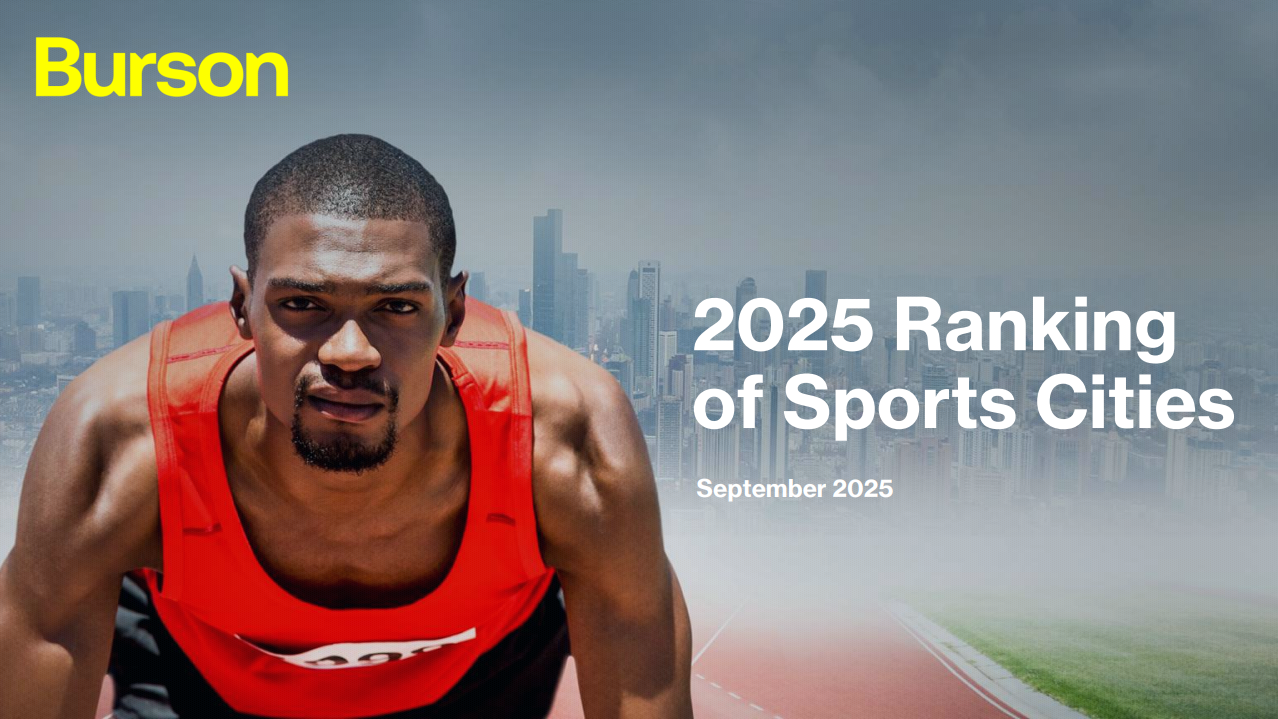As the world becomes increasingly connected, it's only natural for local agencies and businesses to expand across regions and borders. But how are they evolving alongside these new opportunities, and how does the function of comms differ?
To find out, Telum Media spoke with Tala Booker, Founder and CEO of Via Group. Launched in 2023, Via began as an idea to help businesses connect with audiences across borders. Since then, it has grown into a cross-border integrated marketing and communications agency with reach across the APAC and Middle East regions.
Tala shared her experience on how markets are operating in tandem in today's connected landscape, the Middle East as a new growth hub, and how businesses can effectively enter new markets.
You've spent much of your early career leading multiregional and global comms. With Via's operations now covering the APAC and Middle East, what are some of the biggest shifts you’re seeing in how businesses are approaching brand, leadership, and reputation in today’s connected landscape?
I love this question as it speaks to why Via exists and how we solve problems for our clients.
We are witnessing an unprecedented upheaval in how businesses are managing their reputation. Reputations don't stay local anymore - thanks to new social platforms, the interconnected nature of geopolitics, technology, and more - yet, how a business connects with its audience differs market to market.
These two concepts must coexist for today's CEOs, which is why businesses find it so challenging to enter new markets or deepen their engagement in diverse regions like Asia Pacific and the Middle East.
Whether you're trying to win the confidence of the Singaporean regulator, raise capital in Sydney, or hire in London, your strategic messaging and brand must flex but still feel like you - from tone of voice and visual identity, through to the thematics that you weigh in on.
These businesses need partners that comprehend the global landscape and risks, as well as the hyper-localised trends on the ground. This is driving a mindset shift among business leaders and CEOs, where leaders are starting to treat brand and reputation as a core part of their business strategy, not something to react to. Which is especially true in sectors like banking and financial services, where trust, visibility, and regulation all intersect.
At Via, we're seeing clients that are thinking more holistically and are crafting reputations that match their commercial ambitions as well as their purpose. We're working with globally-minded firms, big and small, that understand their strategic positioning - not only in market matters, but also that it should transcend borders. All this must be done carefully and with precision to resonate with new audiences.
Are companies in established versus emerging markets approaching reputation differently? Are certain ones more proactive in shaping their public narrative, while others remain largely reactive?
Yes, but that gap is narrowing fast.
In places like Singapore, Australia, and the UK, there's generally more structure and a seat at the table for in-house communications and corporate affairs teams. When these teams are established, there's an understanding that media relationships are a critical investment, and issues preparedness is key.
But what's exciting is how ambitious and proactive some of the younger businesses in emerging markets are. They're not waiting until they hit scale to start building their reputation or thought leadership.
In Singapore especially, we're seeing an increasing number of businesses putting communications at the centre of major moments, whether that's launching into a market, raising capital, or responding to regulatory change. They know that telling their story well gives them an edge.
And because they're not tied to legacy ways of working, they often move faster and take more creative risks. We've worked with founders that understand not only the role that public narrative plays in unlocking partnerships, customer trust, and funding, but also that this narrative needs to be managed with intention.
We're seeing a growing trend of ANZ and APAC-based businesses expanding into emerging economies in Southeast Asia and more recently, the Middle East. What's fuelling this shift, and why is the Middle East becoming such an attractive hub for communications-led business strategy?
There's so much opportunity in the GCC markets right now. Governments are investing heavily in innovation and infrastructure, and international businesses are looking to bring their product, knowledge, and capital to the region, especially in areas like financial services, real assets, and tech.
For our clients, this expansion isn’t just about growth, it’s about timing. They're entering new markets while the ecosystem is still forming, which means they can shape how they're perceived from the start. That's where communications comes in. It's about landing the right message, for the right audience, at the right moment.
We always sit our clients down for a discovery session to understand their commercial objectives, competitive landscape, and audience. From there, we design messaging that works across stakeholder groups, from regulators to investors to the media. We also run immersion sessions with executives to help them understand how their messages will land locally and how they can communicate with impact.
It's about building confidence and clarity before stepping onto a new stage, deeply understanding your audiences' needs, and how your brand will resonate with these needs.
What’s your approach to quickly adapting to local culture and media dynamics in new markets? How important is to have boots on the ground versus working with clients remotely?
Local insight combined with international expertise is everything. You can't build credibility without understanding the nuances of how business is done and how messages are received. But, prevailing trends globally influence local markets, too, so you must have a strong grasp of these international trends.
Our team either has senior leaders on the ground that live and breathe that market, or we partner with other boutique advisory firms that really 'get it'. They bring deep local knowledge and relationships, which allows us to advise with confidence and care.
At the same time, we possess a global lens. Many of our clients speak to multiple audiences across multiple markets, and our role is to make sure the narrative connects and holds together. It's not about having a team in every city - it's about being intentional in how and where you show up.
This hybrid approach has allowed us to stay close to our clients, often joining leadership meetings and strategy sessions, as well as activating local expertise where it counts. This combination has helped us deliver value with clarity and ensures the message feels relevant, not recycled.

Telum Talks To: Tala Booker, Founder and CEO of Via Group
Telum Media creating connections
Get in touch to learn more
You might also enjoy
'Perspectives' is a Telum Media submitted article series, where diverse viewpoints spark thought-provoking conversations about the role of PR and communications in today's world. This Perspectives piece was submitted by Praveen Randhawa, Senior Advisor at Leon Communications.
In a world defined by continuous disruption and rapid transformation, corporate communication is continuously evolving. Mirroring the dynamic nature of the operating environment, the pace of change continues to accelerate and communication strategies must adapt constantly or risk being perceived as “out-of-touch”. The mastery of corporate communications is therefore not a curriculum one ever completes. It is a life-long pursuit.
The mindset that once professionals learn the fundamentals of messaging, media relations, crisis communication and stakeholder management they are equipped for corporate challenges, is a dangerous assumption that can quickly derail business strategy, impact business value and erode critical trust.
Mastery is a moving target
Every aspect of today’s corporate communications environment demands fundamental shifts in how communications professionals approach their work and continuous skills development.
The media landscape is constantly transforming with new channels and platforms resulting in highly fragmented audiences and journalists frequently changing beats, publications and even formats. This makes ensuring messaging that is not only clear but can cut through the “noise” a real challenge. Communicators must continuously learn how to understand, leverage and evaluate effectiveness in emerging media environments while building and maintaining collaborative long-term working relationships with journalists.
With the advancement of technology comes a new set of communication norms and challenges. Advanced analytics for example provides deeper insights but requires new skills to effectively analyse and interpret, while AI-powered content generation offers efficiency gains but requires editorial judgment to ensure accuracy, authenticity and brand consistency.
Given the heightened regulatory environment, each regulatory change creates new compliance and communication requirements that teams must master quickly to stay ahead in order to protect the license to operate. Competitive pressures from a constantly shifting landscape requires agile communicators able to ensure effective data driven competitive differentiation across all external communications.
Continuous learning: The DNA of high performance communications
Organisations that invest in continuous learning, even when there is no obvious gap or immediate crisis, unlock the full potential of their communications executives up-skilling them to become valuable strategic assets able to pre-empt and navigate business challenges with increasing sophistication.
With continuous learning and development, communications teams are better able to:
- consistently deliver messages that strengthen brand equity
- draw on established trust and credibility, enabling faster resolution of issues and reduced reputational damage in a crisis
- secure media coverage, speaking opportunities, partnerships, and talent interest that create business value
- pivot quickly in response to market changes to effectively launch new initiatives, pre-empt competitive challenges and navigate complex stakeholder environments with greater confidence.
Building systems for continuous corporate communications growth
The mastery of corporate communication is a constant work in progress, which companies can kick-start by building the following organisational systems:
- Developing regular scenario-based skill-building and training based on critical business issues to build skills that directly transfer to real-world challenges;
- Creating cross-functional learning partnerships to continuously deepen understanding of business context and stakeholder needs;
- Establishing external learning networks for the sharing of insights and best practices;
- Building measurement systems that track and audit long-term effectiveness;
- Creating rapid response learning systems to quickly capture lessons learned and share insights to accelerate collective learning and improve future responses.
Companies that adopt a mindset of continuous improvement and treat corporate communications development as a strategic investment will build capabilities that can effectively navigate any business environment and turn communication challenges into competitive advantages.
The alternative is falling behind with each industry shift, watching as organisations with more sophisticated corporate communications capabilities attract better talent, manage crises more effectively, and build stronger brands.
Imran Jalal has stepped into the role of Communications Director at TSMP Law Corporation, a boutique law firm based in Singapore.In the new position, he will lead the firm's communications and marketing functions.
Imran brings over a decade of experience in journalism and digital media, most recently serving as Digital Director at SPH Media.
Burson has published its 2025 Ranking of Sport Cities report, which identified the top 100 cities globally with the strongest association with sport.
The report is based on perception and quantitative analysis, including feedback from international sports leaders, industry experts, and over 1,000 sports media representatives globally, as well as PR metrics and enhanced social media and media coverage analytics, covering 1st July 2024 to 30th June 2025.
The 2025 list featured 19 cities from Asia Pacific and five from the Middle East. At 13th, Tokyo ranked highest within these two regions, followed by Beijing at 14th, Brisbane at 20th, and Dubai at 21st. Regional rankings are as follows:
- Australia and New Zealand: Brisbane (20), Sydney (28), Melbourne (32), Gold Coast (57), Perth (82), Auckland (84).
- Greater China: Beijing (14), Hong Kong (50), Shanghai (63), Chengdu (72), Guangzhou (74).
- Southeast Asia: Singapore (52), Jakarta (96), Bangkok (97).
- Middle East: Dubai (21), Abu Dhabi (23), Doha (25), Riyadh (38), Jeddah (91).
Key findings include:
- As a 'major riser,' Abu Dhabi rose 23 positions from its 46th rank in 2024, a result attributed to the city's diversification in its sports hosting strategy beyond its traditional Formula 1 events.
- As a ‘stable leader’, Tokyo maintained rankings between 8th and 13th from 2023-2025, which was credited to its 2021 Olympic Games host city legacy as well as its upcoming hosting of the World Athletics Championships in September 2025.
- Another ‘stable leader,' Dubai placed between 19th and 21st from 2023-2025, which was attributed to its strategy of combining both elite and mass participation events for locals.
The Olympic lifecycle effect demonstrates predictable patterns of rise and decline.
Olympic and Paralympic host cities experience pre-Games momentum, peak visibility during the Olympic year, and post-Games decline (as seen with Tokyo dropping from 8th place in 2023 to 13th in 2021). The report suggested that strategic cities can achieve recovery through legacy activation by planning for the full Olympic lifecycle - not just the Games itself.
Based on this trend, Brisbane’s ranking should rise significantly as the 2032 Games approaches, and cities bidding for 2036 should see ranking improvements during the bidding process. These predictions suggested strategic opportunities for timing investments to maximise global sports positioning.
Diversification of sports offerings outperforming one-off events.
Top-performing cities strategically diversified their sports portfolios, balancing prestigious events, regular league fixtures, and daily sports attractions. Abu Dhabi, whose ranking rose from 46th in 2024 to 23rd in 2025, has consistently hosted major international events, such as Formula 1 Abu Dhabi Grand Prix, and large golf and tennis tournaments. Riyadh’s jump from 42nd to 38th reflected Saudi Arabia’s growing investment across sports, from golf (LIV Golf) and football (Spanish Soccer Cup) to mixed martial arts (UFC Fight Night).
Based on this observation, Jeddah is poised for a potential ranking jump thanks to hosting events like the F1H2O and the Next Gen ATP Finals.
AI’s role in reshaping the sports landscape, enabling new competitive advantages.
Events and leagues are using AI to amplify their reach and engagement. In leveraging sports for reputational gains, cities can look towards AI to enhance the communications around their hosting and sports initiatives, especially around fan engagement workflows.
The report predicted that cities investing in advanced fan experiences should result in continued digital acceleration. But it also recognised that the pace of AI development renders it difficult to predict which cities will benefit from increased visibility from AI investment.


